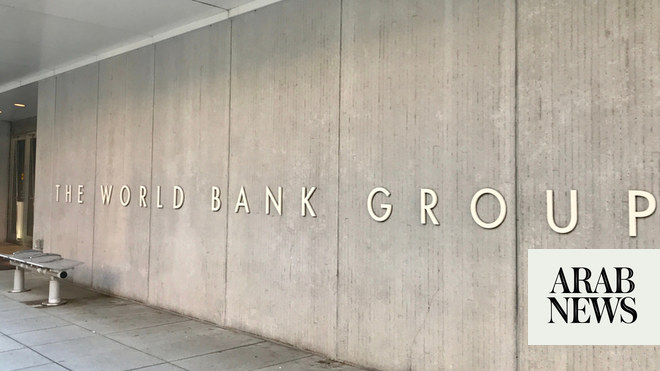
The project is expected to reduce greenhouse gas emissions by 965,000 tons over the next 30 years while increasing freight capacity
WASHINGTON: The World Bank has approved a $400 million development-financing agreement to help boost Egypt’s logistics and transportation sectors and facilitate the transition to low-carbon technology along the Alexandria–the 6th of October–Greater Cairo Area railway corridor.
The Egyptian railway system is one of the largest in Africa. Although the main focus along the Alexandria–the 6th of October–Greater Cairo Area corridor is on passenger services, there are also three freight trains in both directions each day.
The Cairo Alexandria Trade Logistics Development Project plans to build a railway bypass to circumvent the congested corridor. It will provide freight trains with an alternate route to the west of the Greater Cairo area, between the Alexandria Sea Port and the new 6th of October Dry Port. By 2030, the bypass is expected to allow 15 container trains a day to access the dry port, and 50 by 2060. More freight trains will run between Alexandria Port, Upper Egypt and the Red Sea.
The transportation sector is the second-largest contributor to Egypt’s greenhouse gas emissions, accounting for more than 19 percent of the total, but the carbon footprint of transporting containers and other freight by train is smaller than that of road transportation. The development initiative is expected to reduce greenhouse gas emissions by 965,000 tons over a 30-year period, according to the bank.
“Reforming the transportation and logistics sectors is vital to Egypt’s competitiveness and economic development,” said Egyptian Transport Minister Kamel El-Wazir.
“This new project introduces several improvements in those vital sectors. The improvements are aligned with Egypt’s pressing development priorities, which include decarbonization, trade facilitation, private-sector participation, and gender balance in the workplace.
“Increasing the number of containers moved by rail from zero to 184,000 per year is one of the project’s key objectives. This flow of containers is primarily between the Alexandria Sea Port and the 6th of October Dry Port, both privately operated and railway oriented.”
Officials said the project will help Egypt integrate into global value networks and become a regional economic powerhouse. Given the predicted reductions in greenhouse gas emissions, it is also expected make a substantial contribution to the country’s 2050 National Climate Change Strategy.
“This operation is part of a wider set of efforts dedicated to offer timely and comprehensive support to Egypt’s economic development and climate change plans,” said Marina Wes, the World Bank’s country director for Egypt, Yemen and Djibouti.
“We hope that through supporting more job creation, including for women, a cleaner environment, and providing safer mobility, the operation will contribute toward a brighter and more prosperous future for all Egyptians.”












